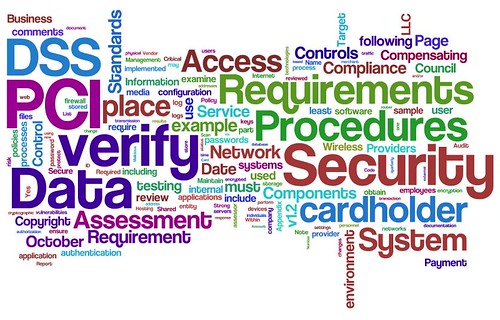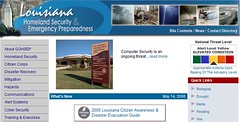IBM introduces a structured approach to securing generative AI by focusing on protection at each phase of the AI lifecycle. The framework emphasizes securing three critical elements: the data consumed by AI systems, the model itself (during development/training), and the usage environment (live inference). These are supported by robust infrastructure controls and governance mechanisms to oversee fairness, bias, and drift over time.
In the data collection and handling stage, risks include centralized repositories that grant broad access to intellectual property and personally identifiable information (PII). To mitigate threats like data exfiltration or misuse, IBM recommends rigorous access controls, encryption, and continuous risk assessments tailored to specific data types.
Next, during model development and training, the framework warns about threats such as data poisoning and the insertion of malicious code. It advises implementing secure development practices—scanning for vulnerabilities, enforcing access policies, and treating the model build process with the same rigor as secure software development.
When it comes to model inference and live deployment, organizations face risks like prompt‑injection, adversarial attacks, and unauthorized usage. IBM recommends real-time monitoring, anomaly detection, usage policies, and safeguards to validate inputs and outputs in live AI environments.
Beyond securing each phase of the pipeline, the framework emphasizes the importance of securing the underlying infrastructure—infrastructure-as-a-service, compute nodes, storage systems—so that large language models and associated applications operate in hardened, compliant environments.
Crucially, IBM insists on embedding strong AI governance: policies, oversight structures, and continuous monitoring to detect bias, drift, and compliance issues. Governance should integrate with existing regulatory frameworks like the NIST AI Risk Management Framework and adapt alongside evolving regulations such as the EU AI Act.
Additionally, IBM’s broader work—including partnerships with AWS and internal tools like X‑Force Red—surfaced common gaps in security posture: many organizations prioritize innovation over security. Findings indicate that most active generative AI initiatives lack foundational controls across these five pillars: data, model, usage, infrastructure, and governance.
Opinion
IBM’s framework delivers a well-structured, holistic approach to the complex challenge of securing generative AI. By breaking security into discrete but interlinked phases — data, model, usage, infrastructure, governance — it helps organizations methodically build defenses where vulnerabilities are most likely. It’s also valuable that IBM aligns its framework with broader models such as NIST and incorporates continuous governance, which is essential in fast-moving AI environments.
That said, the real test lies in execution. Many enterprises still grapple with “shadow AI” — unsanctioned AI tools used by employees — and IBM’s own recent breach report suggests that only around 3% of organizations studied have adequate AI access controls in place, despite steep average breach costs ($670K extra from shadow AI alone). This gap between framework and reality underscores the need for cultural buy-in, investment in tooling, and staff training alongside technical controls.
All told, IBM’s Framework for Securing Generative AI is a strong starting point—especially when paired with governance, red teaming, infrastructure hardening, and awareness programs. But its impact will vary widely depending on how well organizations integrate its principles into everyday operations and security culture.

Generative AI, Cybersecurity, and Ethics
ISO 42001 Readiness: A 10-Step Guide to Responsible AI Governance
Aligning with ISO 42001:2023 and/or the EU Artificial Intelligence (AI) Act
The Strategic Synergy: ISO 27001 and ISO 42001 – A New Era in Governance
Think Before You Share: The Hidden Privacy Costs of AI Convenience
The AI Readiness Gap: High Usage, Low Security
Mitigate and adapt with AICM (AI Controls Matrix)
DISC InfoSec’s earlier posts on the AI topic
Secure Your Business. Simplify Compliance. Gain Peace of Mind
InfoSec services | InfoSec books | Follow our blog | DISC llc is listed on The vCISO Directory | ISO 27k Chat bot | Comprehensive vCISO Services | ISMS Services | Security Risk Assessment Services | Mergers and Acquisition Security










































![Reblog this post [with Zemanta]](https://img.zemanta.com/reblog_e.png?x-id=8310531f-dd51-48b2-9dca-4a52b857f987)


![Reblog this post [with Zemanta]](https://img.zemanta.com/reblog_e.png?x-id=75ca6076-5285-4eaa-9251-01afd6576cbb)

![Reblog this post [with Zemanta]](https://img.zemanta.com/reblog_e.png?x-id=388a1882-ddc8-487a-bc63-9310f0c69ecc)

![Reblog this post [with Zemanta]](https://img.zemanta.com/reblog_e.png?x-id=28dcae72-914e-4823-9632-cd34145194b7)


![Reblog this post [with Zemanta]](https://img.zemanta.com/reblog_e.png?x-id=f4c7607a-8a48-4ed1-bba2-9bb41450aa23)

![Reblog this post [with Zemanta]](https://img.zemanta.com/reblog_e.png?x-id=a4367ffd-91c3-481f-b56e-6c1bbc7cc7ea)



